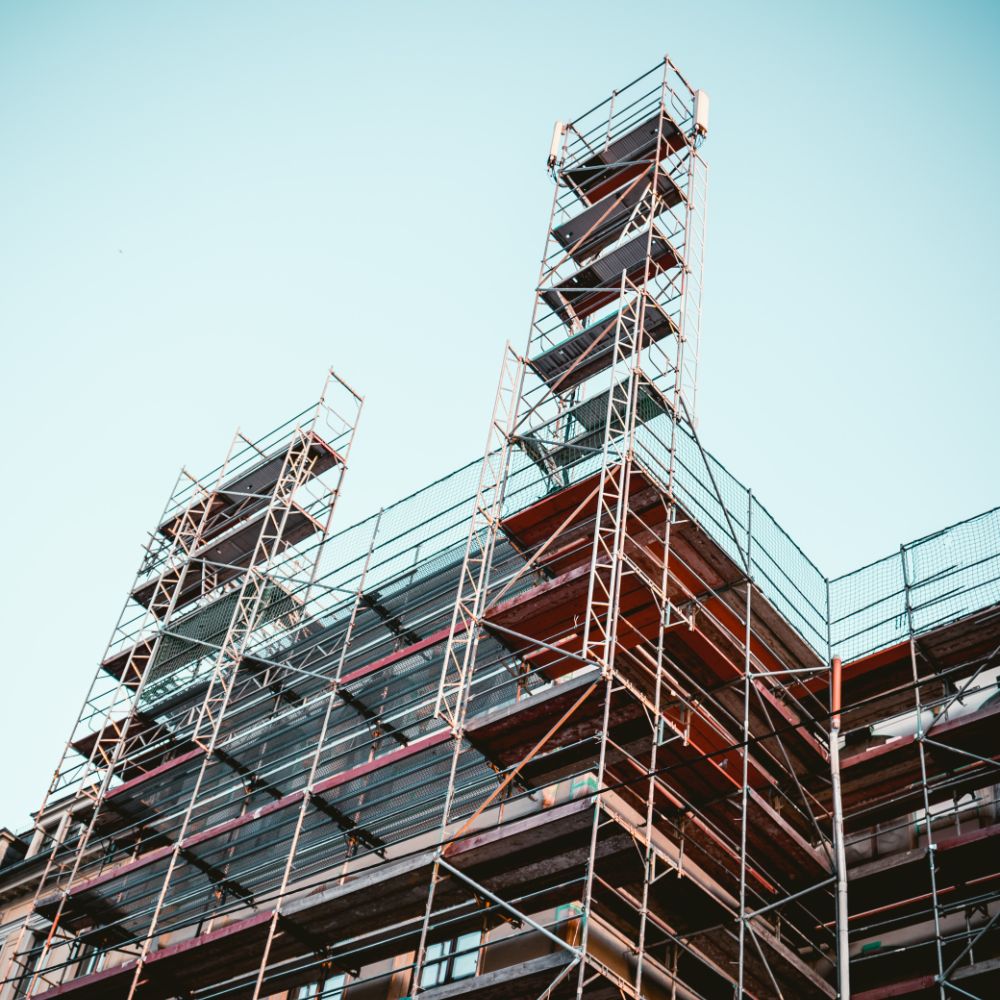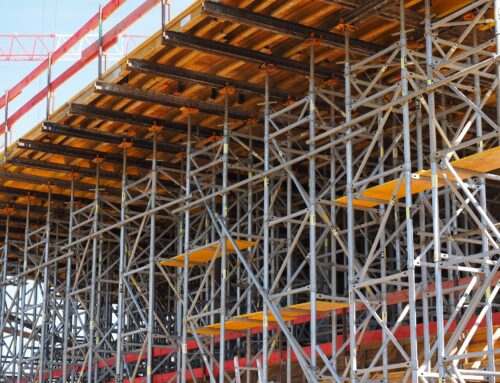Scaffolding is an essential component of construction projects, providing a secure and stable platform for workers to perform various tasks at height. With numerous scaffolding types available, it’s crucial for construction professionals to understand the differences and select the most suitable option for their project – that’s where we come in! In this comprehensive guide, we will compare the most common scaffolding types, discussing their advantages, disadvantages, and best use cases.
Tube and Coupler Scaffolding
Tube and coupler scaffolding, also known as tube and fitting scaffolding, is a traditional and versatile type of scaffolding. It consists of steel or aluminium tubes connected by various couplers and fittings, allowing for a high degree of flexibility in design and configuration. This adaptability makes it suitable for a wide range of projects, including those involving irregular building shapes and structures. However, its assembly and dismantling can be time-consuming and require skilled labour.
Prefabricated Modular Scaffolding
Prefabricated modular scaffolding, also known as system scaffolding, is made up of pre-engineered components that easily lock together, streamlining the assembly process. Popular systems include Kwikstage, Cuplock, and Ringlock. These systems offer faster and easier assembly and dismantling than tube and coupler scaffolding, as well as improved safety and stability due to uniform components and standardized connections. On the other hand, they may be less adaptable to irregular shapes and can be more expensive due to the need for specialised components.
Suspended Scaffolding
Suspended scaffolding, also known as swing-stage scaffolding, consists of a platform suspended from an overhead structure by ropes, cables, or chains. This scaffolding type is commonly used for maintenance, repairs, and cleaning tasks on tall buildings or structures. It provides easy access to high or difficult-to-reach areas and has an adjustable height to adapt quickly to changing work conditions. However, it has a limited load capacity compared to other scaffolding types and requires strict adherence to safety regulations and regular inspections.
Mobile Scaffolding
Mobile scaffolding, also known as rolling scaffolding, features a platform mounted on castor wheels, allowing for easy repositioning around a job site. This type of scaffolding is highly portable and easy to move, making it suitable for both indoor and outdoor use, as well as simple to assemble and dismantle. Nevertheless, it is limited to relatively flat and even surfaces and has lower load capacity and height restrictions compared to stationary scaffolding types.
Cantilever Scaffolding
Cantilever scaffolding, also known as needle beam scaffolding, is supported by cantilevered beams anchored to a structure, rather than being built from the ground up. This scaffolding type is ideal for situations where ground support is not feasible or where there are obstructions on the ground. It allows for work above obstacles or in situations where ground support is impossible and has reduced impact on pedestrian access and ground-level operations. However, it requires careful engineering and planning to ensure stability, has limited load capacity compared to ground-supported scaffolding types, and is not suitable for all building types and situations.
Conclusion
Selecting the right scaffolding type is crucial for the safety, efficiency, and success of your construction project. By understanding the advantages and disadvantages of each scaffolding type, you can make an informed decision that best suits your project’s specific requirements.
By carefully considering each of these scaffolding types and their unique characteristics, we can ensure we select the most suitable and cost-effective solution for your project, ultimately contributing to a safer and more efficient working environment. As the construction industry continues to evolve, staying informed about the latest developments in scaffolding technology and best practices will help ensure the success of your projects.
Get in touch with us if you’re looking for assistance with your next project!
Learn more about our scaffolding in…








